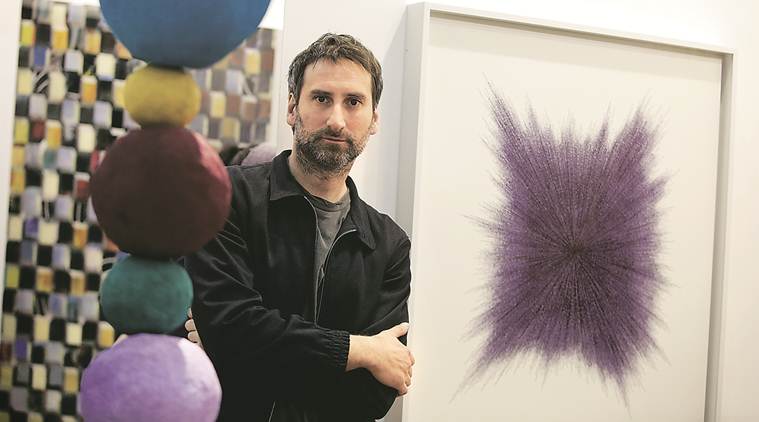Written by Vandana Kalra |Updated: February 11, 2019 12:10:03 am
‘It’s not necessary to respond to everything, but you can’t ignore things’
British artist Idris Khan on melodic layering in his work and confronting images of conflict

Drawing from varied sources — from the Quran to Italian artist Caravaggio’s paintings and Jacques Derrida’s essays — British artist Idris Khan is known for his captivating and minimal compositions. Appointed Officer of the Order of the British Empire in 2017 for services to art, his work 21 Stones is a collection of 21 stamp paintings that is part of the permanent exhibition of Islamic art at the British Museum. Khan’s memorial dedicated to Emirati soldiers, Wahat Al Karama (Oasis of Dignity), is located between the Sheikh Zayed Grand Mosque and General Headquarters of the UAE Armed Forces. The artist was in Delhi recently for the India Art Fair (IAF), where his works were being exhibited by Galerie Isa. Khan, 40, spoke about his recent commissions and growing interest in South Asian art.
Tell us about about 21 Stones. The work you showed at IAF also comes from there.
It comprises 21 different texts stamped in blue oil paint on paper, and is based on “Stoning of the Jamarat” ritual that takes place during the annual Haj pilgrimage to Mecca. The pilgrims throw stones at a wall that represents the devil. In a way, I was imagining for these stones to turn into works. I liked the idea of people coming to the British Museum and be drawn to this work on the large wall. From a distance it looks like firecracker explosions but on looking closely you notice that it represents the Jamarat. I grew up as a Muslim and father too went for Haj when I was around 25.
Do you think your upbringing as a Muslim also influences your work? Does the melodic layering in your work come from the practice of Islam?
My father was from Lucknow but I was born in Birmingham and grew up in Walsall, where I was a white kid in the mosque. My mother was a nurse from Wales. If you are raised in that environment, there are cross cultures and influences. It was a massive part of my life and I was a practicing Muslim till the age of 15. There’s a rhythm when you pray five times a day. You are always repeating words. Maybe that’s inherent in what I do in the studio, the process of layering images, writings. I was also an athlete, and would run miles and miles. There was a certain endurance and determination about that, which also reflects in my art. When I make something, I see it as a journey to completion and it doesn’t matter how long it takes.

You recently completed your art studies at the Royal College of Art when Charles Saatchi bought some of your work. Do you think that helped gain immediate recognition?






















No hay comentarios:
Publicar un comentario